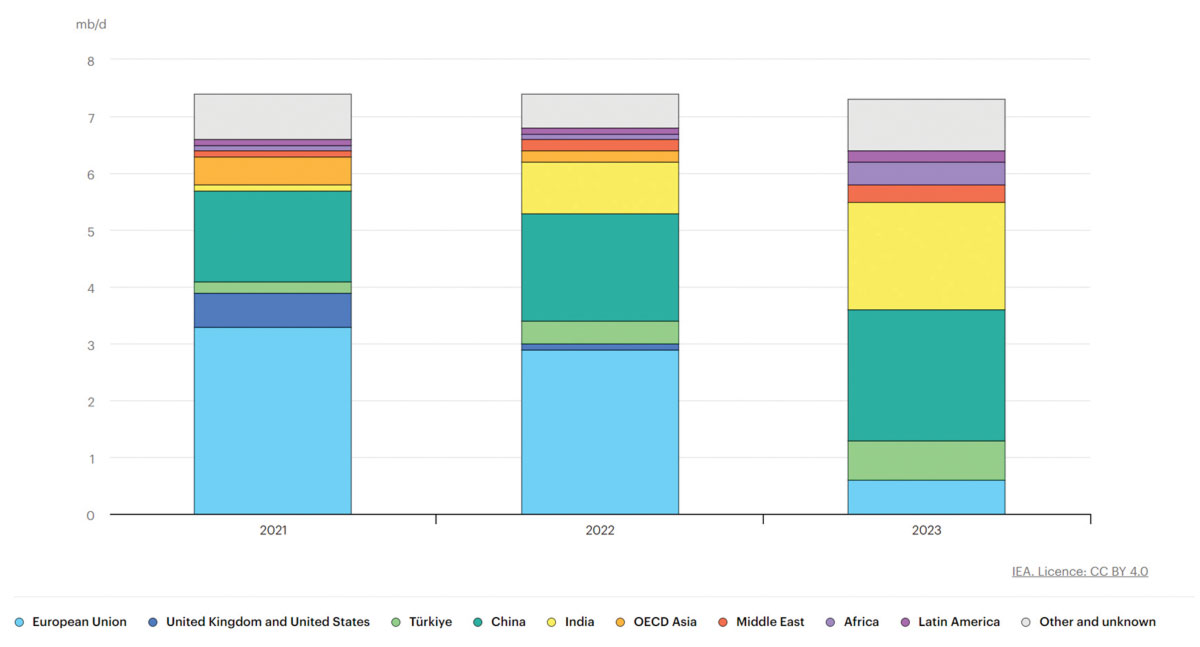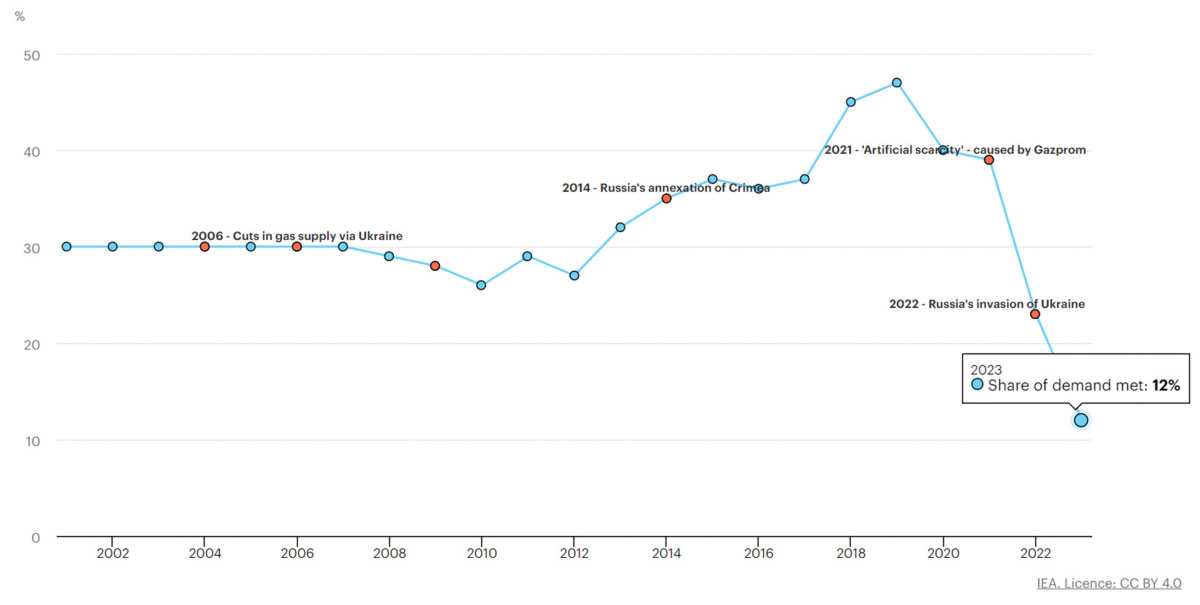WAR ON ENERGY: Damaging More Than Human Lives

What is currently happening in Ukraine and in The Middle East (Yemen and The Gaza Strip) is something the civilized world regards as an aberration. In short, there’s no way people would be treating other people like this in the 21st century. However, this is our reality and, for better or for worse, we have to make do.
But the toll taken on human lives is not the only casualty of war. A close second is the economy, and a natural third is the energy sector. What the mentioned nations are going through is undoubtedly horrific, but the whole world is impacted, in more ways than we can imagine. Stick with us and find out how exactly the war on energy is unfolding.
The current situation in the war zones
The war started as of February 24th, 2022, still rages on in Ukraine. Bombardments and shelling continue, as military targets haven’t been the sole recipients of the Russian army’s wrath. Homes, schools, hospitals, and other critical civilian infrastructure continue to be fair game in a war that seems more like an extermination attempt than a fight for territory.
According to the International Rescue Committee, some 3.7 million people are currently displaced inside Ukraine. Close to 6 million have fled the country and are seeking safety in the neighbouring states. While the world is scaling up the humanitarian response, including legal, financial, and psychological support, Ukraine is set to receive military aid of roughly €56 billion US, as President Biden already signed the bill. Still, official data indicates that damages to the energy infrastructure have already discontinued power supply to over 440 towns and villages.
The bill in question also includes foreign aid to Israel, as the conflict in the Gaza Strip shows no signs of slowing down. Video footage proves that even zones deemed as “safe areas” have all but been levelled. As it stands, the conflict that was restarted by the militant group Hamas on the 7th of October has claimed over 34,000 Palestinian lives and hurt over 77,229 civilians. More than 1,200 Israelis have been killed with even more injured following the surprise attacks, and over 200 have been taken hostage.
According to The Washington Post, at the moment this article is being written, Israel’s war cabinet is planning a meeting to discuss a future incursion in Rafah, a region where most of Gaza’s population has been displaced. Even though peace talks, and hostage release deals have been negotiated for months, the conflict seems to be far from reaching a conclusion. More than a handful of countries, among which are Egypt and The Netherlands, are calling for an immediate ceasefire, and warn that any Israeli operations in Rafah have the potential of “catastrophic consequences on the humanitarian situation in the Gaza Strip.”
Meanwhile, the Iran-aligned Houthi group in Yemen continues to harass US and Israeli vessels. As fervent supporters of Hamas, the Houthis have been launching attacks on vessels stationed near their shores since November, in a bid to stop Israel’s war on Gaza. According to the US Maritime Administration, there are currently up to 50 attacks. As Iran has also started an unprecedented attack on Israel, firing more than 300 drones and missiles, out of which 99% have been stopped, we might be looking at the beginning of a serious regional war.
Seems to be that we’re only some loose sparks away from this powder keg of a situation becoming a full-blown explosion.

The energy toll taken on Ukraine
Since the beginning of hostilities, DTEK Group, a Ukrainian conglomerate of companies striving to achieve carbon neutrality, has felt the full force of the invasion. Still, according to their own statements, they have restored power supply to over 11 million consumers in the war-torn areas.
The Russian attacks on DTEK power stations keep on injuring their engineers, with some of them being hospitalized or sustaining serious bruising. Since February, Russia has been escalating its attacks on Ukraine’s energy infrastructure. During the two years’ war, there have been more than 150 attacks on DTEK Energy’s power facilities and over 9,700 attacks on infrastructure. Still, repair crews have restored almost 17,000 km worth of power lines in the meantime. As it stands, more than one million households, but also businesses, have suffered blackouts in the regions covered by DTEK infrastructure. So far, 252 DTEK staff have lost their lives serving in the military, on the energy frontline or off duty.
Despite the ongoing war, DTEK has recommitted to intensify the efforts of building a new energy system in Ukraine, while at the same time urging allies to help in protecting the existing infrastructure. According to their website, “DTEK opened the 114 MW Tyligulska Wind Power Plant last spring and is working with Denmark’s Vestas to more than quadruple its capacity over the next two years. Its €450 million cost makes it the largest private energy investment in Ukraine since independence.”
Other plans include the country’s largest wind farm and a major grids modernization project or a utility-scale battery storage project that would support renewable energy.
Apart from constant attacks on power plants, the Russian military are also targeting hydropower plants, which has halved DTEK’s available energy generating capacities. Transmission networks have also been targeted, which further cripples Ukraine’s electrical grid.
Despite using defensive protection under the form of cages, concrete blocks or sandbags, the infrastructure is so damaged in most cases that it has to be completely rebuilt.
As Ukraine still lacks adequate air defences, the attacks are almost impossible to repel, as per a report by The Washing Post. Another problem arises: DTEK has already used almost all the backup equipment to repair damaged previously dealt by other Russian strikes.
On the second of April, DTEK has embarked on a fresh mission, that of launching a new Advisory Council that aims at rallying support for Ukraine’s energy sector. The company is also part of the World Economic Forum’s Partnership Against Corruption Initiative (PACI). The council will meet once every three months in either London, Amsterdam, or Kyiv or at several key international events.
As of the middle of April, following high precision Russian attacks, the company is currently operating at a mere 20 to 30% of its normal output. The engineers and maintenance crews are more concerned with clearing debris than tending to the energy infrastructure. The news is grim indeed, as authorities estimate that power stations are close to completely giving out. This would mean a collective return to “primitive and communal life”.
According to officials, the only thing standing in the way of such a disaster is the warm weather, energy imports from the EU and an increase in renewable energy generation. The previous winter campaign had already caused widespread blackouts. In this context, it seems that distributed generation is the way forward, for example with solar stations and wind farms, as these facilities are more resilient in the face of targeted strikes. Ukraine’s energy security and resilience depends on this shift.
According to the International Energy Agency, Russia’s war on Ukraine has already dramatically changed the energy markets and energy security in the region. Prices are still high, and some regions continue to face stunting of economic growth as a result. The trade patterns for natural gas and oil have also shifted, as renewables have seen an increase in demand.
After its invasion of Ukraine, Russia cut around 80 billion cubic meters or pipeline gas supplies headed for Europe. We had to rely on LNG from the US, and we met over 40% of the deficit that way. Still, gas use in the industry fell by close to 25%.

The energy situation in The Middle East
As we’ve already explained, the war in The Middle East is disrupting more than human lives. The drones and missiles flying over the Red Sea are affecting one of the most important trade routes in the world. As this is also a choke point for energy shipments headed towards Europe, the effects are slowly becoming visible. The EU is still reliant on imported gas to power factories, heat homes and generate electricity.
Said security concerns have already led energy companies and shipping firms to reroute their vessels. Sure, this is a viable and safe option, but the journey is severely lengthened by a week or more, which raises costs.
So far, we haven’t noticed any impact on natural gas prices, but this is mainly due to the fact that Europe is also getting its gas from Azerbaijan or Norway. Despite sanctions, some of the gas is also coming from Russia. As fears rise concerning a regional war that could include Iran, key routes for oil, not just gas, could be affected. As of now, both Israeli and U.S. officials have avoided directing blame at Iran for direct involvement in Hamas attacks. Hezbollah has also started firing missiles at Israel.
If proof does surface that Iran is behind Hamas and Hezbollah attacks, either via financial or material support, the sanctions on Iran’s oil exports will certainly increase. But a tougher stance could prove challenging.
In a worst-case scenario, increasing sanctions made on Iran could lead to retaliation under the form of an attack on Saudi Arabia’s oil installations—one of the world’s major exporters and producers. We’ve seen the same situation in 2019: Yemeni Houthi rebels backed by Tehran attacked the infrastructure, and Saudis temporary cut half of the production. Back then, the price of Brent hiked to almost 20% in a day. What would that price increase look like today?
If, for example, Leviathan (Israel’s largest gas field), were to close, the price surge could reach a historical high. But still, the conflict already cut gas supplies coming to Israel and may soon have wider impacts on exports. As per Israel’s energy ministry’s statements, electric utilities in Israel should already start looking for alternative fuel sources. If the conflict continues, the shutdown of platforms such as Tamar and EMG would affect not only the domestic gas supply but would pose some serious regional and international issues. Exports to Egypt would be affected, and, in turn, Egypt’s LNG exports to Turkey and other European Union Countries, disrupted. It certainly looks like a domino effect at this point. Israel has also responded to attacks perpetrated by Hamas: they have severed Gaza’s electricity, water, and fuel supplies. While it is a viable tactic of war, it deepens an already existing humanitarian crisis.
Of course, if the conflict remains limited in scale and reach, the prices may see a limited change, and OPEC may maintain current production levels. As it stands, The Middle East accounts for 31% of oil production and 18% of gas production. However, there’s also a 48% of proven oil reserves and 40% proven gas reserves.
However, OPEC’s response seems to be different to the Israel-Hamas war than it was to the conflict between Russian and Ukraine. OPEC aims to continue collaborating with Russia. Both Saudi Arabia and OPEC will continue to monitor the impact of the unfolding events, but most likely will avoid making any decisions based on short-term volatility.
The world itself is not resting easily. Last September, reports came in regarding sabotages made to the Nord Stream pipelines between Germany and Russia. It is still unclear who is responsible. On the other hand, Estonian and Finnish authorities have been investigating leaks that also look like sabotage. This added pressure on an already tensioned global market have upped the scrutiny on how well infrastructure is actually defended. If the incidents prove to be deliberate attacks on NATO critical infrastructure, the response will soon follow.
Many fear the world is on the brink of an all-out war. However, until that war reaches us, we will feel a wave of political and economic changes that might disrupt day to day life as we know it. The only thing we can do is hope for the best-case scenario.





